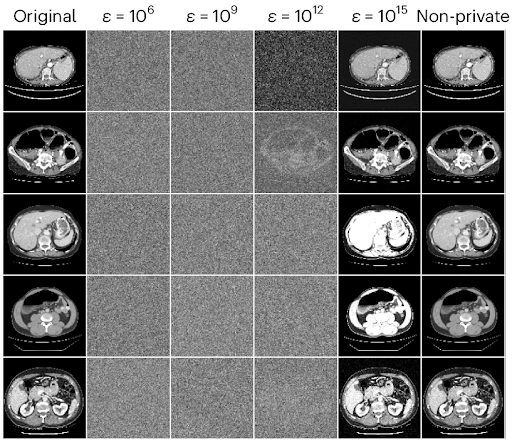No-shows happen when patients do not show up for their scheduled appointments and do not tell the healthcare provider beforehand. This causes many problems for hospital managers and clinic staff. Missed appointments waste staff time, leave resources unused, and cause lost money. For example, one missed appointment usually costs about $200. Since no-show rates can be as low as 5.5% or as high as 50%, depending on the patients and clinic type, the total lost money can add up quickly.
Missed visits also mess up the flow of care. Doctors and nurses have to work less efficiently. Hospitals that need careful scheduling find it hard to fill empty spots quickly. It becomes tricky to plan how many staff members, rooms, and equipment to use. When no-shows happen often, patients might wait longer for care. This delay can lead to worse health outcomes because treatment is late.
AI Solutions for Reducing Patient No-Shows
Artificial intelligence can help handle patient attendance by using data and automation to make scheduling and communication easier. AI systems look at things like patient information and past appointment history to guess who might miss an appointment. This helps healthcare providers focus on patients who need extra attention to keep their appointments.
For example, Simbo AI created a system that automates phone calls, reminders, and rescheduling. It sends personalized messages by calls, texts, and emails. Using reminders in different ways can lower no-show rates by up to 30%. Sending an email five days before, a phone call three days before, and a text on the day of the appointment works well.
Patients can confirm or cancel easily, which helps clinics fill open spots faster. When AI reminders are combined with real phone calls, no-show rates can drop from about 17.3% to 13.6%. This shows how technology and personal contact work well together.
Impact of AI on Appointment Attendance and Hospital Capacity
Hospitals and clinics that use AI for scheduling see better attendance at appointments. One study showed a 10% rise in attendance after adding AI systems. This also improved hospital use of space and staff by 6%. More patients get care without needing extra resources or workers. Better attendance helps clinics save money by cutting down on wasted time.
AI scheduling can also reduce how long patients wait by up to 30%. This is important for big hospitals and busy specialists because long waits may make patients skip appointments. For example, the Mayo Clinic cut wait times by 20% using AI, and Johns Hopkins improved new patient processing by 60%.
With better scheduling, doctors are free when patients need them most. Some places say they have 20% more doctor availability. This helps serve more patients when staff numbers are low.
AI Call Assistant Manages On-Call Schedules
SimboConnect replaces spreadsheets with drag-and-drop calendars and AI alerts.
The Role of AI in Identifying High-Risk Patients
AI also helps by guessing which patients are likely to miss appointments. It looks at factors like age, income, health history, and past attendance. Using this information, AI gives each patient a risk score.
Total Health Care, Inc. used AI to cut no-shows by 34% for high-risk patients. They gave those patients extra reminders, flexible scheduling, or telehealth visits. This focused approach lets clinics reach out more effectively before patients miss visits.
AI keeps learning from new data, so it gets better at predicting no-shows over time. This makes appointment systems smarter and more helpful.
Telehealth Integration and Flexible Scheduling
Telehealth, which lets patients see doctors online, also lowers no-show rates. It removes problems like getting to the clinic, moving around, or work and family conflicts. Studies show telehealth can cut missed visits by up to 60%. This works well with AI reminders and scheduling.
AI-powered flexible scheduling allows patients to book appointments anytime. They can pick times that fit their schedules. Clinics use this to manage waitlists, adjust appointments, and plan staff shifts based on expected demand. This helps patients get care when they need it and improves satisfaction.
AI and Automation Transforming Front-Office Workflow
AI also changes how front-office jobs are done. These jobs include phone calls, entering patient data, and handling appointments. These tasks usually take up a lot of staff time, reducing time for patient care. AI from companies like Simbo AI can automate these tasks.
Automation can save clinics up to 15 hours each week for every provider. It also lowers mistakes in managing appointments and patient information. This helps clinics run more smoothly.
With AI handling routine tasks, staff have more time to focus on complex work and patient needs. AI systems also help clinics follow privacy rules like HIPAA by protecting patient data with encryption and secure access.
HIPAA-Compliant Voice AI Agents
SimboConnect AI Phone Agent encrypts every call end-to-end – zero compliance worries.
Economic Benefits and Operational Improvements from AI Implementation
Reducing no-shows saves lots of money. Each missed appointment costs about $200. Cutting no-shows by just 20% means big revenue gains. For example, Phoebe Physician Group made $1.4 million more every year and saw 168 extra weekly patient visits after using AI scheduling.
With fewer gaps in the schedule, clinics use their staff better and reduce stress on workers. They spend less on overtime and outreach. There are also fewer last-minute cancellations and empty appointment slots. All these help clinics make more money and offer better care.
Security, Compliance, and Trust in AI Systems
Keeping patient data safe and following laws is very important. AI scheduling systems like Simbo AI’s follow HIPAA rules to protect privacy. They use encryption, limit who can see data, and keep logs of activity. These security features help build trust with patients and meet legal requirements. This way, healthcare providers can safely use new technology.
Encrypted Voice AI Agent Calls
SimboConnect AI Phone Agent uses 256-bit AES encryption — HIPAA-compliant by design.
Summary
AI tools that lower no-show rates and automate front-office work are becoming important for medical practices and hospitals in the U.S. They help more patients keep appointments, use resources better, reduce lost money, and make work easier for staff. AI scheduling, predictive analytics, telehealth, and automation together are changing how healthcare groups manage patient appointments and communications. This leads to better efficiency and better care for patients.
Frequently Asked Questions
What is the main issue caused by patient no-show behavior?
Patient no-show behavior complicates hospital resource optimization, leading to waste and increased operating costs, ultimately affecting financial structure and service quality.
How can healthcare managers mitigate no-show risks?
Healthcare managers can make accurate predictions about patient attendance by analyzing demographic and behavioral data, allowing them to optimize the appointment system accordingly.
What technology was developed to address patient no-shows?
An artificial intelligence-based appointment system was developed that learns from past and current patient data to improve appointment management.
What were the results of implementing the AI-based appointment system?
The AI-based appointment system improved patient attendance rates by 10% and increased hospital capacity utilization by 6% per month.
How does the AI system function?
The AI system continuously improves appointment assignments by learning from recorded data on patient demographics and past behaviors.
What impact does managing no-show risks have on hospitals?
Managing no-show risks through AI significantly decreases hospital costs and enhances the overall quality of service provided to patients.
What data points are utilized in the AI appointment system?
The system uses recorded data, including patient demographics and historical behavior patterns, to predict appointment attendance.
What is the significance of accurate predictions in healthcare appointments?
Accurate predictions allow hospitals to better allocate resources, optimize scheduling, and ultimately improve financial outcomes and patient satisfaction.
What are the implications of increased appointment attendance?
Increased attendance not only improves financial performance but also enhances patient care consistency and reduces wait times for all patients.
What are the future research directions implied by this study?
Future research may focus on further enhancing AI algorithms, integrating more diverse data sources, and exploring patient engagement strategies to lower no-show rates.
The post Exploring the Role of AI in Reducing Patient No-Show Rates and Enhancing Hospital Efficiency first appeared on Simbo AI – Blogs.











